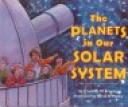In The Planets In Our Solar System, by Franklyn Branley, the author reviews the nine planets; including Pluto in the discussion. The author explains that several of the planets look like bright stars; but for others (Uranus and Neptune) you would need a telescope to see them. This text explains that asteroids, comets, and meteoroids are part of the solar system and describes each. This book explains to students that the planets move around the sun in orbits. The author informs that the coldest planets are those farthest away from the sun (Neptune). Mercury and Venus are the hottest planets as they are the closest.
Curriculum Connections
This text would be a great resource for a fourth grade classroom to learn the planets in the solar system, their order, and their sizes. This book includes excellent visual aids for students to gain a clearer understanding of these concepts. It provides several different pictorial representations of these concepts, as well as a chart that explains how long it would take for each planet to go around the sun (VA SOL 4.7 a, b, c). This text further provides two projects that students can complete. One involves creating a mobile of the solar system to show the different sizes of the planets. Another project involves using a wall to make a model to demonstrate the nine planets and their distances from the sun.
Additional Resources
- KWL: This site provides a booklet for students to record what they know, what they want to know, and what they have learned about the solar system.
- Solar System Shuffle: Game in which students match the planet with the correct description.
- Where, or Where Does that Little Object Go: Game in which students match which planet goes into which orbit on the map.
Book: The Planets in our Solar System
Author: Franklyn Branley
Ilustrator: Don Madden
Publisher: Harper Collins Publishers
Publication Date: 1981
Pages: 32
Grade: K-4
ISBN: 0-690-04579-4

